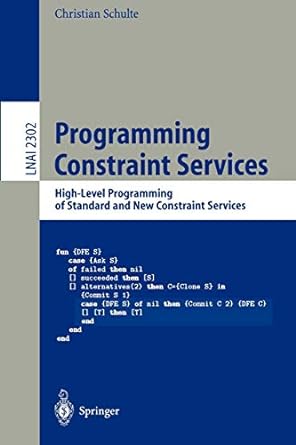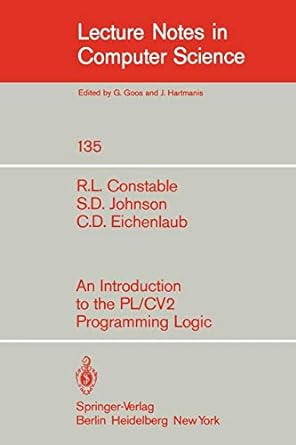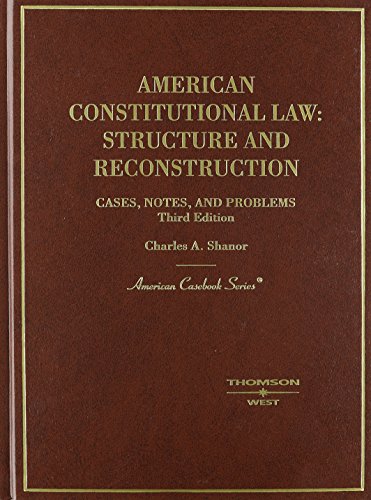Go back


Programming Constraint Services High Level Programming Of Standard And New Constraint Services LNAI 2302(1st Edition)
Authors:
Christian Schulte

Cover Type:Hardcover
Condition:Used
In Stock
Include with your book
Free shipping: April 06, 2024Popular items with books
Access to 3 Million+ solutions
Free ✝
Ask 10 Questions from expert
200,000+ Expert answers
✝ 7 days-trial
Total Price:
$0
List Price: $50.78
Savings: $50.78(100%)
Book details
ISBN: 3540433716, 978-3540433712
Book publisher: Springer
Get your hands on the best-selling book Programming Constraint Services High Level Programming Of Standard And New Constraint Services LNAI 2302 1st Edition for free. Feed your curiosity and let your imagination soar with the best stories coming out to you without hefty price tags. Browse SolutionInn to discover a treasure trove of fiction and non-fiction books where every page leads the reader to an undiscovered world. Start your literary adventure right away and also enjoy free shipping of these complimentary books to your door.
Programming Constraint Services High Level Programming Of Standard And New Constraint Services LNAI 2302 1st Edition Summary: Constraint Programming is an approach for modeling and solving combi- torial problems that has proven successful in many applications. It builds on techniques developed in Arti?cial Intelligence, Logic Programming, and - erations Research. Key techniques are constraint propagation and heuristic search. Constraint Programming is based on an abstraction that decomposes a problem solver into a reusable constraint engine and a declarative program modeling the problem. The constraint engine implements the required pr- agation and search algorithms. It can be realized as a library for a general purpose programming language (e.g. C++), as an extension of an existing language (e.g. Prolog), or as a system with its own dedicated language. The present book is concerned with the architecture and implementation of constraint engines. It presents a new, concurrent architecture that is far superior to the sequential architecture underlying Prolog. The new archit- ture is based on concurrent search with copying and recomputation rather than sequential search with trailing and backtracking. One advantage of the concurrent approach is that it accommodates any search strategy. Furth- more, it considerably simpli?es the implementation of constraint propagation algorithms since it eliminates the need to account for trailing and backtra- ing. The book investigates an expressive generalization of the concurrent - chitecture that accommodates propagation-preserving combinators (known as deep guard combinators) for negation, disjunction, implication, and re- cation of constraint propagators. Such combinators are beyond the scope of Prolog’s technology. In the concurrent approach they can be obtained with a re?ective encapsulation primitive.
Customers also bought these books
Frequently Bought Together
Top Reviews for Books
Deliah Vaughn
( 5 )
"Delivery was considerably fast, and the book I received was in a good condition."










